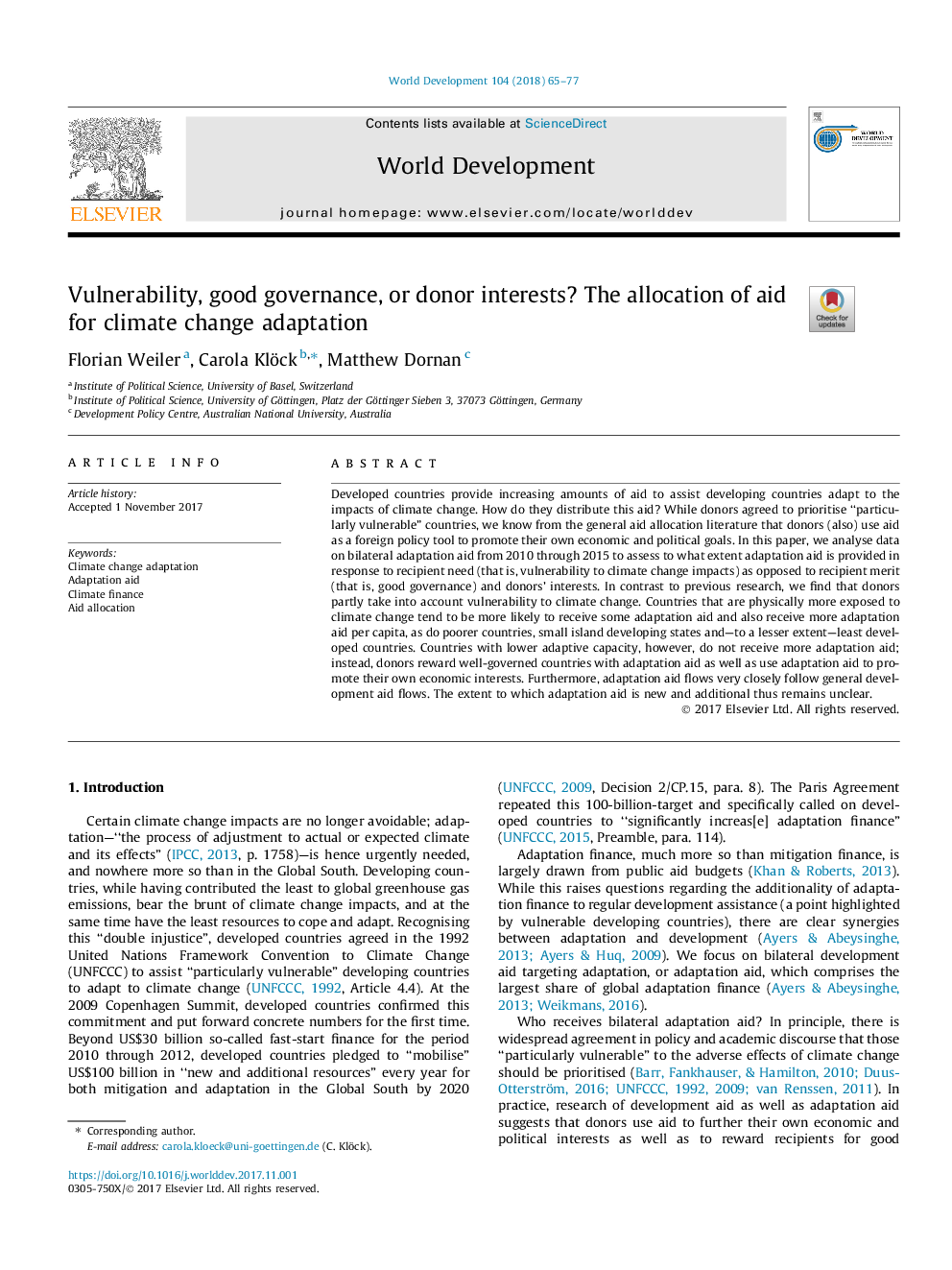| Article ID | Journal | Published Year | Pages | File Type |
|---|---|---|---|---|
| 7392028 | World Development | 2018 | 13 Pages |
Abstract
Developed countries provide increasing amounts of aid to assist developing countries adapt to the impacts of climate change. How do they distribute this aid? While donors agreed to prioritise “particularly vulnerable” countries, we know from the general aid allocation literature that donors (also) use aid as a foreign policy tool to promote their own economic and political goals. In this paper, we analyse data on bilateral adaptation aid from 2010 through 2015 to assess to what extent adaptation aid is provided in response to recipient need (that is, vulnerability to climate change impacts) as opposed to recipient merit (that is, good governance) and donors' interests. In contrast to previous research, we find that donors partly take into account vulnerability to climate change. Countries that are physically more exposed to climate change tend to be more likely to receive some adaptation aid and also receive more adaptation aid per capita, as do poorer countries, small island developing states and-to a lesser extent-least developed countries. Countries with lower adaptive capacity, however, do not receive more adaptation aid; instead, donors reward well-governed countries with adaptation aid as well as use adaptation aid to promote their own economic interests. Furthermore, adaptation aid flows very closely follow general development aid flows. The extent to which adaptation aid is new and additional thus remains unclear.
Related Topics
Social Sciences and Humanities
Economics, Econometrics and Finance
Economics and Econometrics
Authors
Florian Weiler, Carola Klöck, Matthew Dornan,
